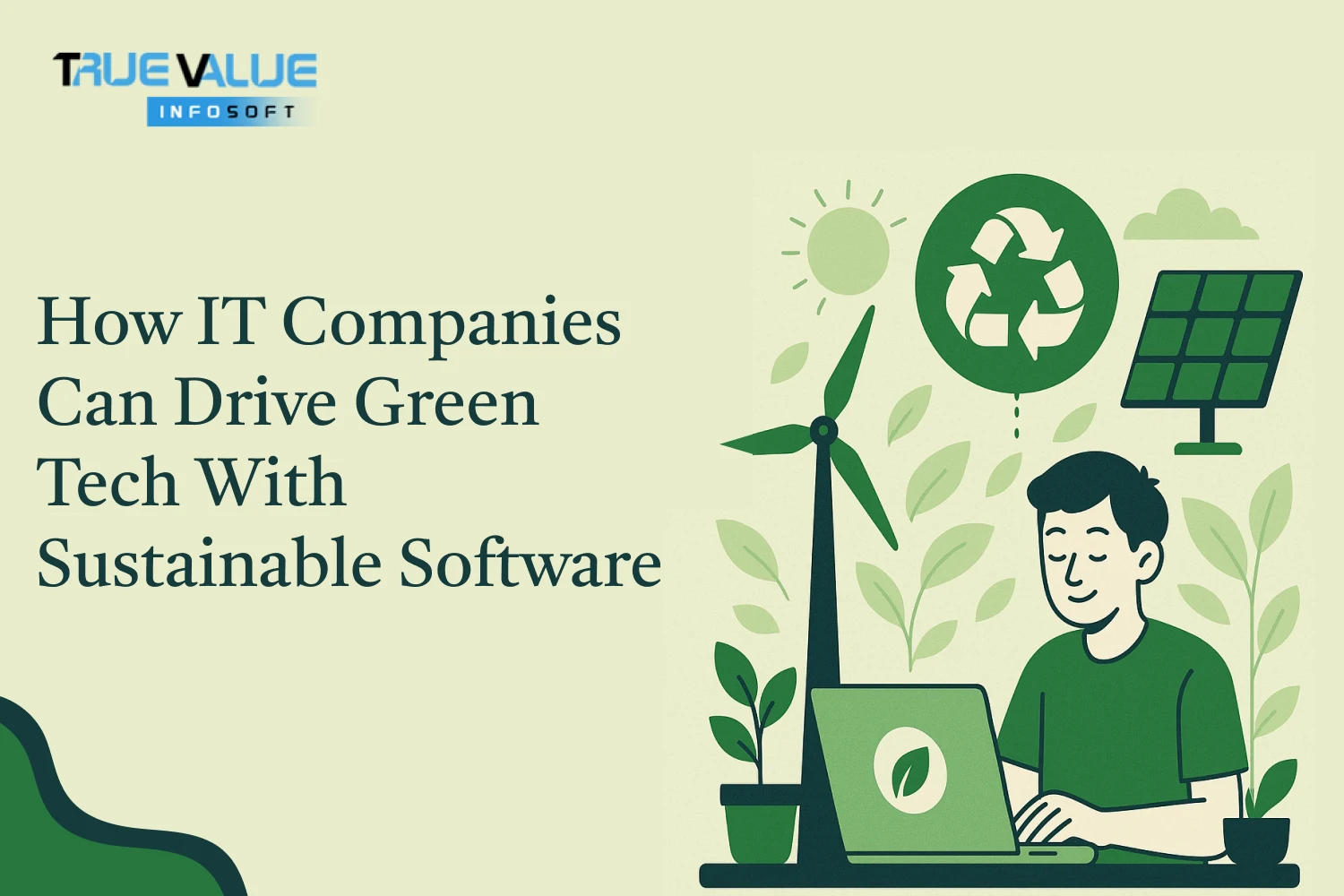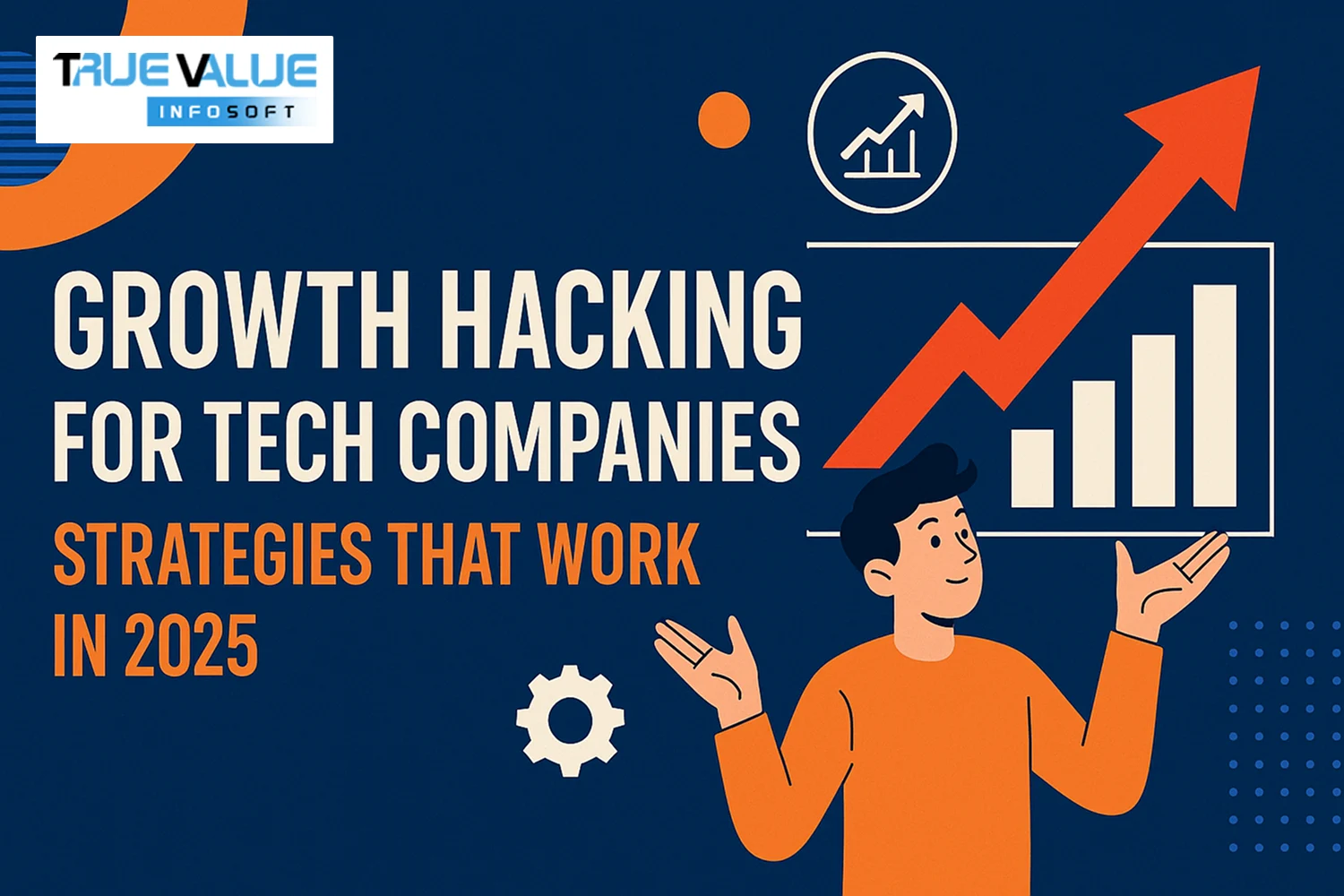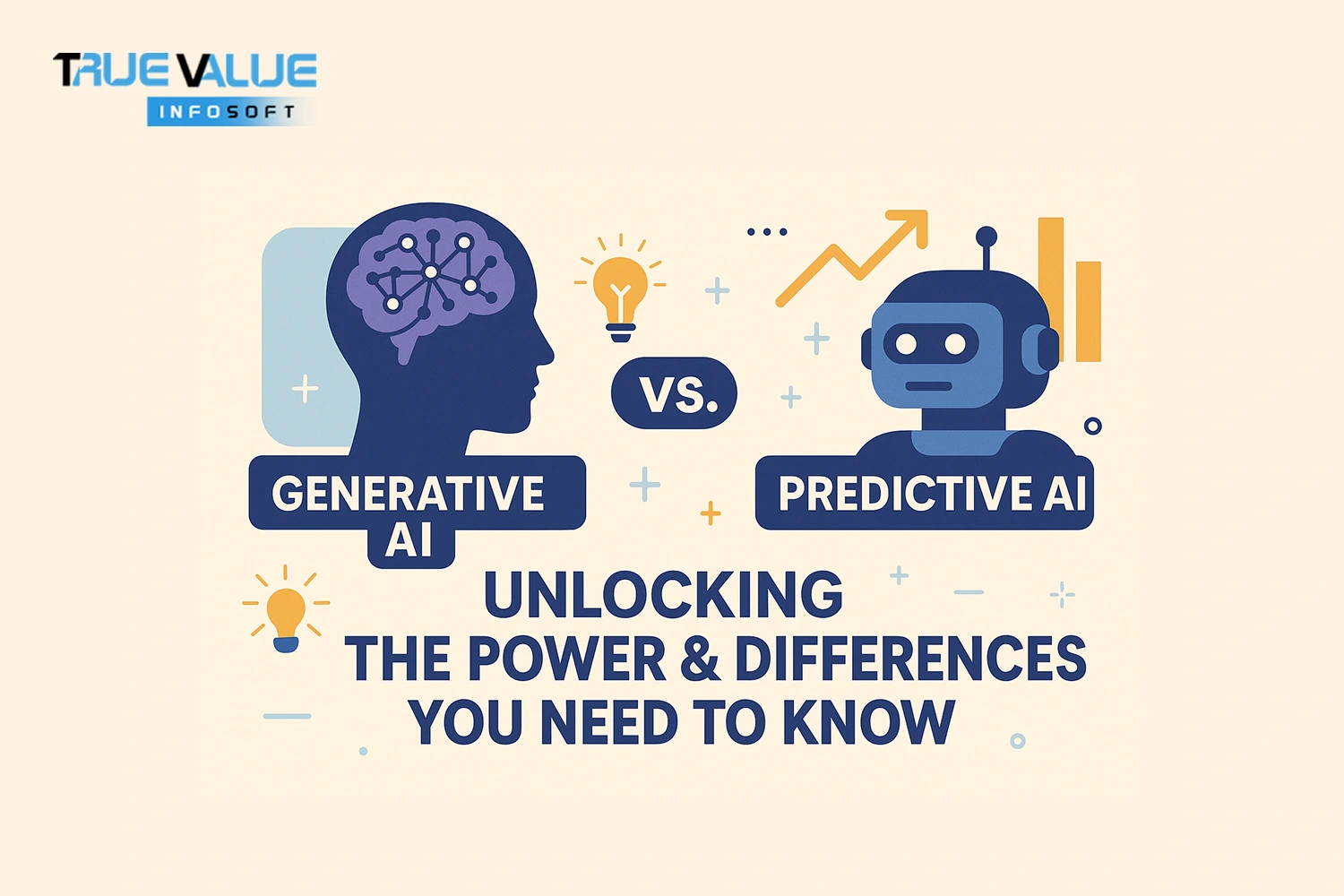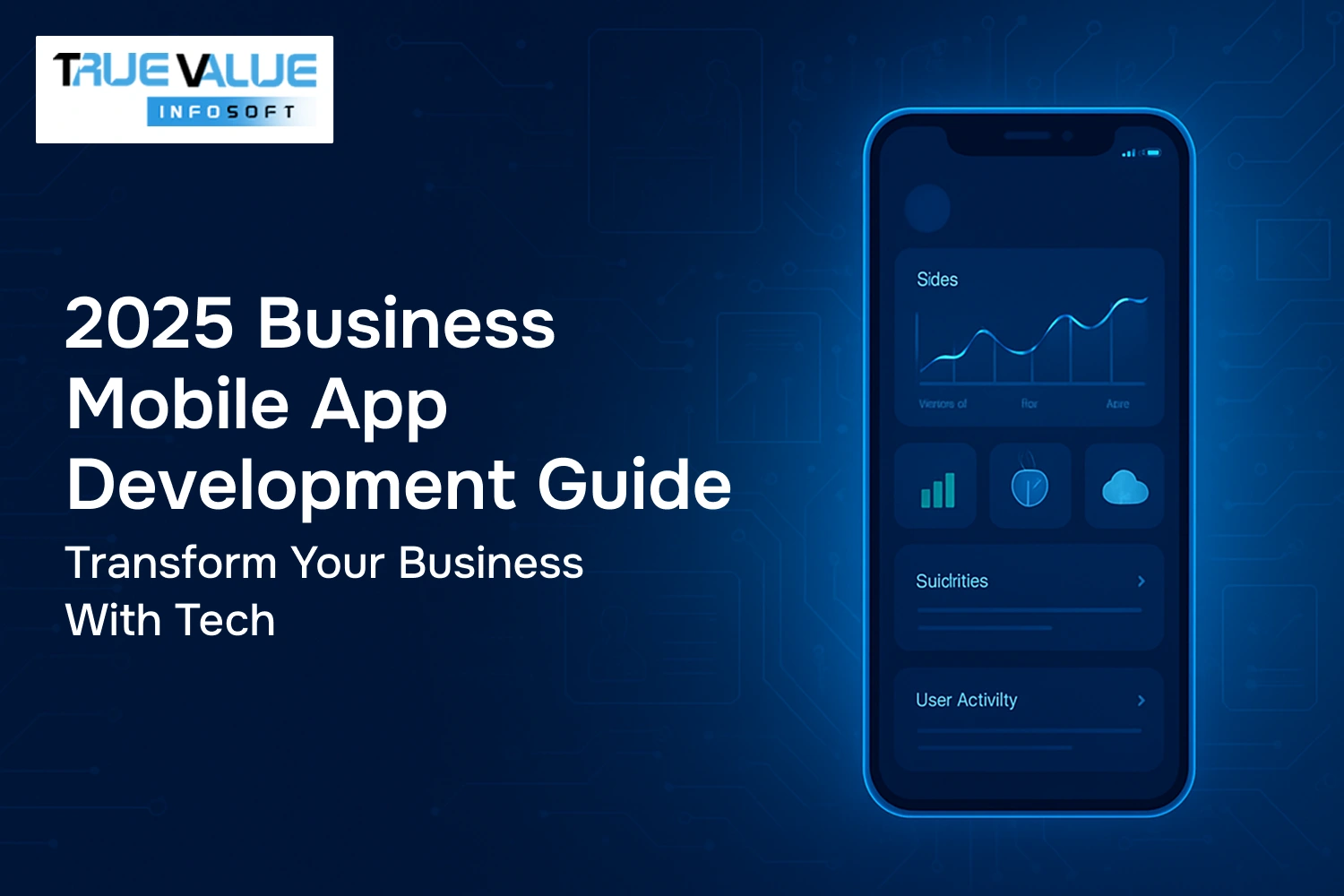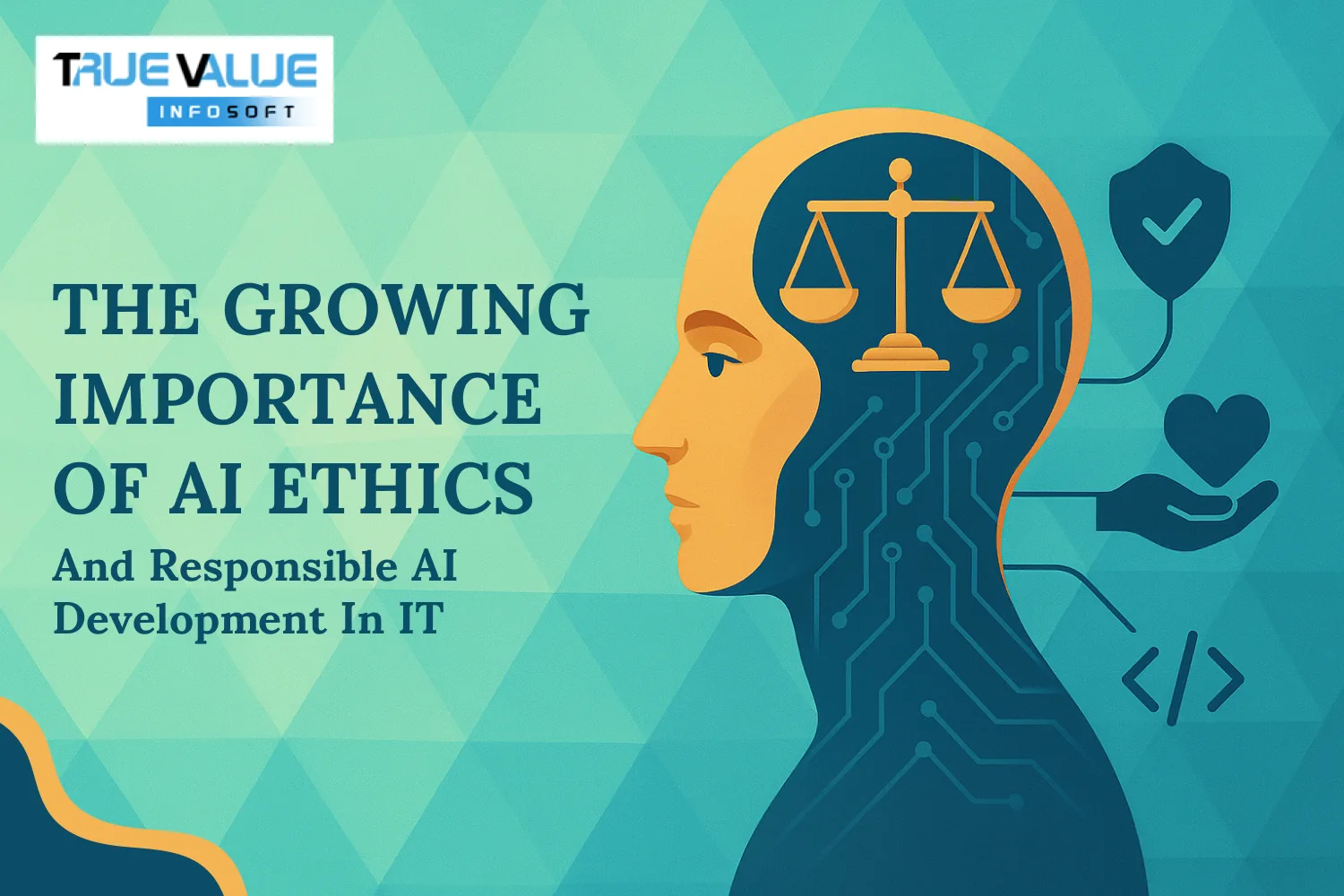Introduction
Curious about how IT companies can play a pivotal role in driving green technology through sustainable software solutions? As the world faces increasing environmental challenges, the tech industry has a unique opportunity to lead the charge in reducing carbon footprints and promoting eco-friendly practices. Sustainable software development focuses on creating applications and systems that minimize energy consumption, optimize resource use, and support environmental goals without compromising performance.
One of the Top 10 mobile app development companies, True Value Infosoft, is at the forefront of this green tech revolution. By integrating sustainable coding practices, energy-efficient algorithms, and cloud-based solutions that reduce hardware dependence, True Value Infosoft helps businesses build eco-conscious digital products. Their expertise includes developing scalable applications that prioritize sustainability — from optimizing server usage to enabling remote work and reducing the need for physical infrastructure.
Moreover, True Value Infosoft incorporates green principles into the entire software lifecycle, emphasizing modular design, efficient testing, and maintenance processes that lower environmental impact. IT companies like True Value Infosoft demonstrate how innovation and responsibility can go hand in hand, proving that technology can be a powerful ally in creating a sustainable future. Embracing sustainable software development is not only good for the planet but also offers long-term cost savings and enhanced brand reputation for businesses worldwide.
Understanding Sustainable Software: More Than Just Energy Efficiency
What is Sustainable Software?
Sustainable software refers to digital applications, systems, or platforms developed with principles that minimize their environmental impact across their lifecycle — from design and development to deployment and maintenance.
Four Dimensions of Software Sustainability
- Environmental Sustainability: Reducing carbon footprints, energy consumption, and hardware dependency.
- Economic Sustainability: Cost-effective long-term maintenance and efficient resource use.
- Social Sustainability: Supporting user well-being, accessibility, and long-term usability.
- Technical Sustainability: Scalability, reliability, and durability of software over time.
Why IT Companies Must Lead the Sustainable Software Movement
The Carbon Cost of Code
Every line of code, every cloud deployment, and every server request consumes energy. According to a report by the International Energy Agency (IEA), data centers alone consume about 1% of global electricity, and this figure is expected to rise.
The Opportunity for Impact
- IT companies can influence thousands of users through sustainable software design.
- Efficient code and resource optimization can significantly lower operational costs.
- By embedding sustainability into software development processes, IT firms can meet ESG (Environmental, Social, and Governance) goals and align with global climate commitments.
Key Strategies IT Companies Can Adopt for Driving Green Tech
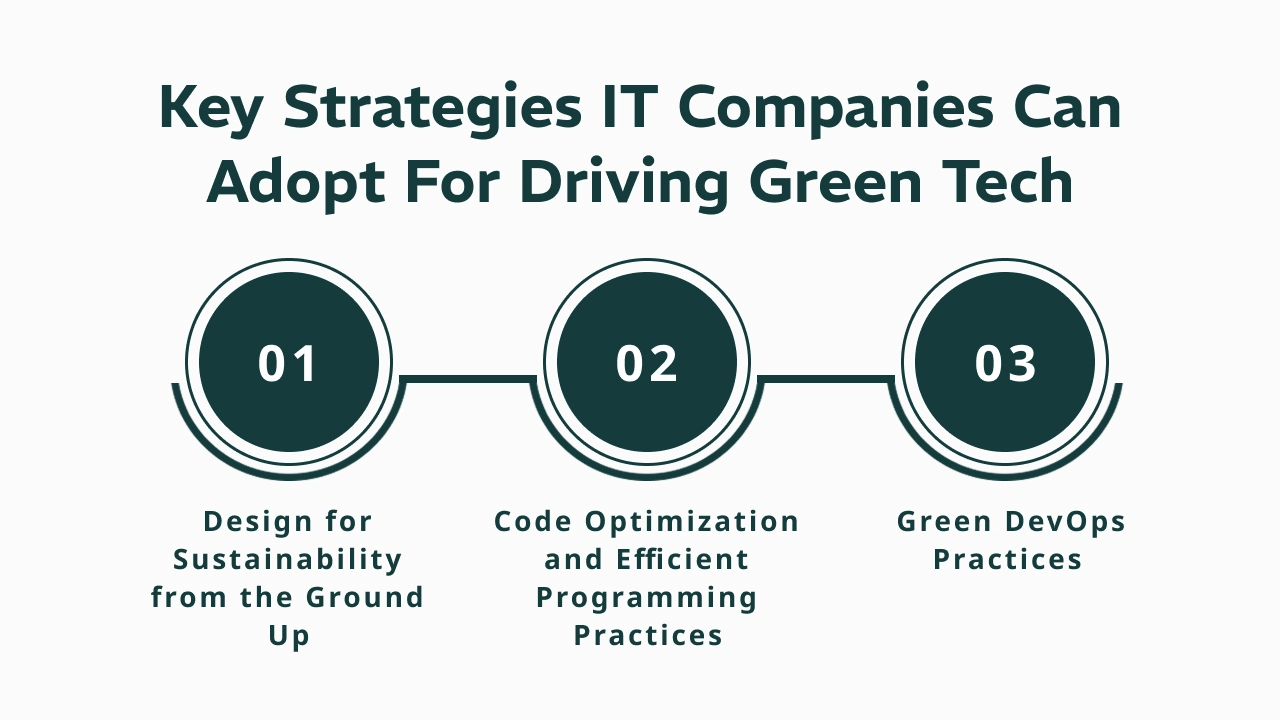
1. Design for Sustainability from the Ground Up
Green Software Architecture
- Modular design: Enables reuse and easier updates, reducing the need for system overhauls.
- Lightweight frameworks: Avoid using bloated frameworks that consume unnecessary processing power.
- Stateless design: Promotes horizontal scalability and energy-efficient load balancing.
Lean UX and UI
- Reduce the need for multiple resource-intensive interactions.
- Design dark mode interfaces to minimize screen energy use (especially on OLED screens).
- Optimize user journeys to reduce server load.
2. Code Optimization and Efficient Programming Practices
- Use efficient algorithms and data structures to reduce computation time.
- Avoid polling and excessive API calls.
- Minimize redundant background processes.
- Use asynchronous programming to enhance performance and responsiveness.
- Implement lazy loading for media and resources.
3. Green DevOps Practices
Energy-Efficient CI/CD Pipelines
- Run builds and tests only when necessary.
- Use containers and virtual environments to minimize resource consumption.
- Automate performance profiling to identify inefficient resource use.
Serverless and Container-Based Architectures
- Reduce idle compute time.
- Scale resources dynamically based on real-time demand.
- Choose greener data center regions for deployments.
Leveraging Cloud Computing for Sustainable Software
Choosing Green Cloud Providers
- Microsoft Azure: Committed to 100% renewable energy usage by 2025.
- Amazon Web Services (AWS): Offers carbon footprint tools and aims to be carbon neutral by 2040.
- Google Cloud: Has been carbon neutral since 2007 and operates using 100% renewable energy.
Cloud Optimization Techniques
- Auto-scaling to reduce unnecessary capacity.
- Right-sizing instances to match demand.
- Turning off unused resources (e.g., test servers) during off hours.
Data Management and Storage Optimization
Sustainable Data Storage Practices
- Deduplicate data to reduce storage footprint.
- Use compressed formats to store logs, images, and videos.
- Archive old, infrequently accessed data.
Database Optimization
- Optimize queries to reduce compute usage.
- Use indexing and partitioning to improve performance.
- Choose eco-efficient database engines that prioritize low CPU use.
Energy-Efficient AI and Machine Learning
The Sustainability Problem with AI
Training large-scale models (e.g., GPT, BERT) consumes massive energy — sometimes equivalent to the carbon emissions of multiple cars over their lifetime.
How to Develop Greener AI
- Use smaller, optimized models where possible (e.g., DistilBERT).
- Leverage transfer learning to reduce training cycles.
- Offload training to green cloud providers.
- Monitor and report AI energy consumption as part of ESG disclosures.
Hardware-Aware Software Development
Minimize Hardware Resource Demand
- Build cross-platform apps that work well even on low-end devices.
- Reduce dependency on external peripherals.
- Encourage longevity by supporting older hardware and operating systems.
Mobile App Optimization
- Reduce app size for faster downloads and lower storage needs.
- Implement background task optimization.
- Use battery-conscious APIs and limit power-intensive services like GPS.
Sustainable Testing and QA Practices
Green Software Testing Techniques
- Reduce test redundancy through smarter test case selection.
- Use virtual testing environments to avoid excessive hardware use.
- Implement continuous performance monitoring to catch inefficiencies early.
Automation for Sustainability
- Use AI-driven testing tools that identify and prioritize eco-impactful bugs.
- Automate performance and energy consumption benchmarking as part of the QA pipeline.
Measuring and Reporting Software Sustainability
Key Metrics to Track
- Carbon intensity per user session or transaction.
- Total energy consumption over time.
- Average CPU, memory, and bandwidth use.
Tools for Measurement
- Green Software Foundation's SCI (Software Carbon Intensity) calculator.
- Cloud Carbon Footprint tool for cloud-based resource tracking.
- Joulemeter (by Microsoft Research) to estimate power usage of computing resources.
Regulatory Compliance and Industry Standards
Relevant Sustainability Standards
- ISO 14001: Environmental management systems.
- ISO 50001: Energy management systems.
- SCI Specification (by Green Software Foundation): Software carbon intensity benchmarking.
Compliance and Reporting
- Prepare regular ESG reports with sustainability KPIs.
- Conduct sustainability audits of internal software tools and processes.
- Engage third-party environmental impact assessors when bidding for green contracts.
Promoting a Culture of Sustainable Software Development
Leadership Buy-In
- Educate leadership on the business and environmental case for green software.
- Include sustainability in core company values and mission.
Team Training
- Train developers, testers, and architects on sustainable coding principles.
- Provide certifications and incentives for learning green development practices.
Internal Sustainability Initiatives
- Establish Green Software Guilds or committees.
- Reward energy-efficient software projects internally.
- Organize Green Hackathons with sustainability themes.
Partnering for a Greener Ecosystem
Collaborating with Sustainable Startups and NGOs
- Partner with organizations focusing on reforestation, renewable energy, and circular economy.
- Collaborate on open-source projects for environmental impact.
Vendor Sustainability Audits
- Evaluate suppliers and vendors for their sustainability credentials.
- Choose hardware vendors who provide take-back and recycling programs.
Case Studies: Companies Doing It Right
Microsoft
- Founded the Green Software Foundation.
- Built cloud infrastructure with water-positive and zero-waste goals.
- Reduced energy use in data centers by 30% using AI-based cooling.
- Achieved 100% renewable energy matching.
Accenture
- Helped clients design sustainable architectures.
- Developed methodologies to reduce software energy impact.
True Value Infosoft: Pioneering Green Tech with Sustainable Software
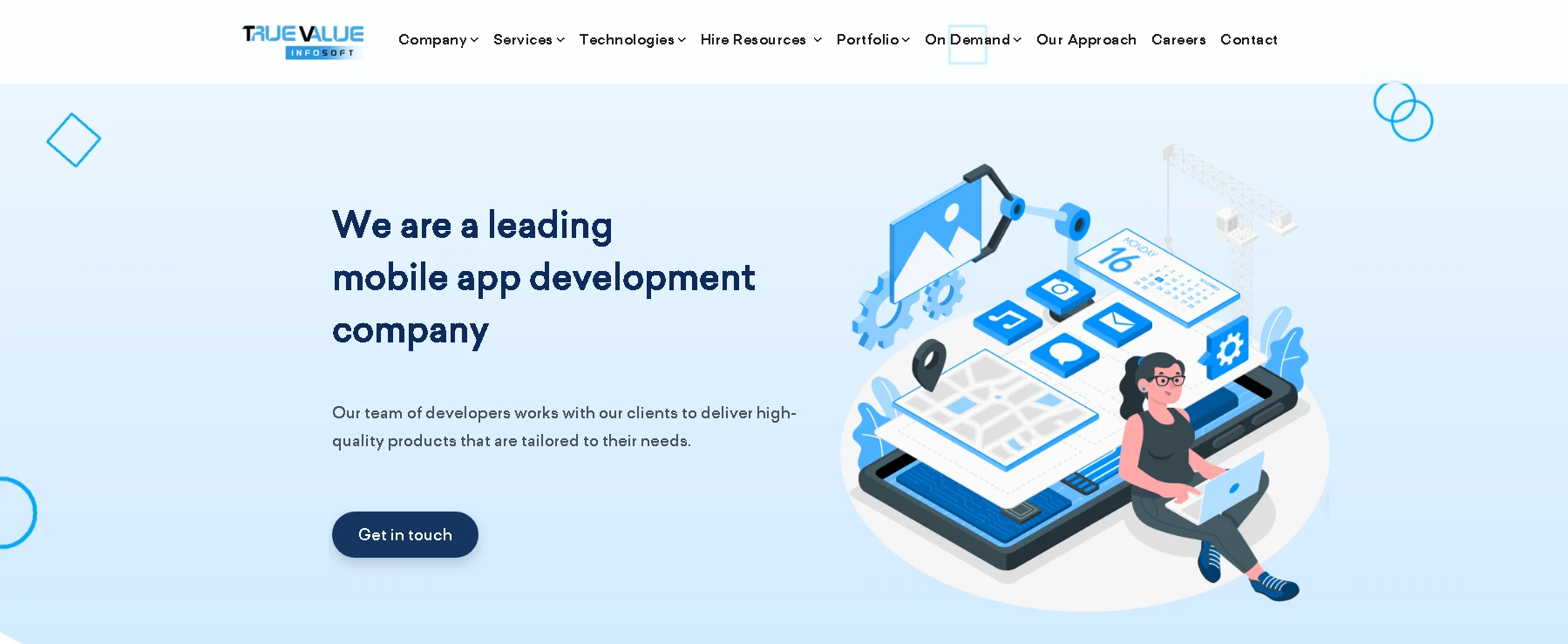
As the best IT company in India, True Value Infosoft is proud to lead the way in sustainable software development. We are committed to:
- Building cloud-native, energy-efficient apps for startups and enterprises.
- Offering green consulting services to optimize existing systems.
- Using AI responsibly with green data center infrastructure.
- Training our team on eco-conscious development and deployment practices.
- Reporting carbon footprints on major projects and iterating toward greener alternatives.
Whether it's creating scalable SaaS solutions, mobile apps, or enterprise-grade systems, True Value Infosoft incorporates sustainability as a core design principle.
Conclusion
Sustainability isn’t a buzzword — it’s a necessity. As the world becomes increasingly digital, the environmental cost of software systems grows. However, IT companies have a unique opportunity and moral obligation to curb emissions, reduce energy use, and develop systems that work not just for business, but for the planet.
By embracing sustainable software practices, IT firms can reduce operational costs, win eco-conscious clients, comply with regulations, and become trailblazers of the Green Tech revolution.
Start today. Every line of code matters.
FAQs
Sustainable software development is the process of creating digital systems with minimal environmental impact, optimized for energy efficiency, performance, and long-term resource conservation.
By using tools like the Software Carbon Intensity (SCI) calculator, Joulemeter, and Cloud Carbon Footprint, companies can track energy usage, CPU consumption, and carbon output over time.
Green cloud providers are a great step, but real sustainability comes from optimizing code, reducing compute demand, and implementing energy-efficient DevOps practices.
Startups can begin with small, impactful steps like optimizing code, choosing eco-friendly cloud regions, and training teams on basic sustainable design principles.
Besides the environmental benefits, sustainable software reduces costs, attracts conscious clients, enhances brand reputation, and aligns with global regulatory trends.
